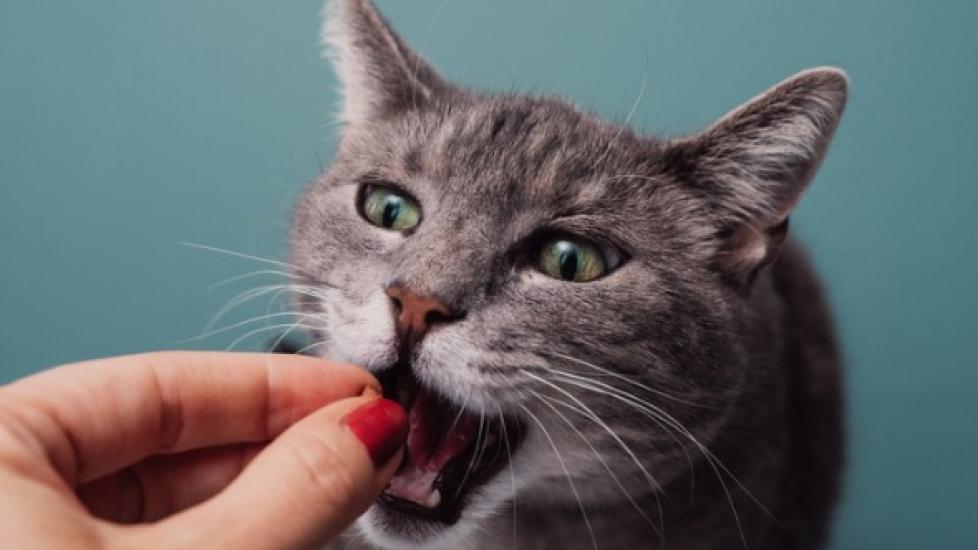What Is Human-Grade Cat Food?
Human-grade cat food is having a moment. But is it really worth the extra money, and for that matter, what does “human-grade” even mean? Here’s what you need to know to determine if a human-grade food is right for your cat.
Human-Grade Cat Food: What Is It?
The term “human-grade” is hard to define. The United States Department of Agriculture (USDA) and Food and Drug Administration (FDA) are responsible for regulating foods meant for human consumption, but they have no “human-grade” designation.
The USDA simply identifies ingredients and products as being either edible or inedible, but for argument’s sake, let’s assume that human-grade is synonymous with human-edible.
Now, let’s look at how that applies to cat food. The Association of American Feed Control Officials (AAFCO) is the organization that develops standards for pet food in the United States. When referencing labeling and labeling requirements for human-grade pet food, they say:
For a product to be human-edible, all ingredients in the product must be human-edible and the product must be manufactured, packed, and held in accordance with federal regulations in 21 CFR 110, Current Good Manufacturing Practice in Manufacturing, Packing, or Holding Human Food. If these conditions exist, then human-grade claims may be made. If these conditions do not exist, then making an unqualified claim about ingredients being human-grade misbrands the product.
In other words, to be called “human-grade,” all ingredients in a cat food must be safe for people to eat, and the ingredients and the whole product have to be manufactured, packed, held, transported, etc., in accordance with USDA and FDA regulations that apply to human foods.
What’s the Difference Between “Human-Grade” and “Feed-Grade” Cat Food?
If the ingredients used to make a cat food aren’t human-grade, they are often referred to as being “feed-grade.” This term has been specifically defined by AAFCO in a 2016 meeting to mean:
Material that has been determined to be safe, functional, and suitable for its intended use in animal food, is handled and labeled appropriately, and conforms to the Federal Food, Drug and Cosmetic Act unless otherwise expressly permitted by the appropriate state or federal agency (Suitable for use in animal feed).
But when you think about it, this definition isn’t all that helpful. Yes, it should eliminate ingredients that are downright dangerous to pets, but other than that, it says little about ingredient quality.
The term feed-grade can describe a low-quality meat by-product meal, but it also applies to what was once a human-edible chicken breast that has been transported to a standard pet food manufacturing facility and can no longer be considered fit for human consumption for that reason alone.
What About a Cat Food That Is “Made With Human-Grade Ingredients”?
Take a close look at pet food labels and advertising. You’ll be hard-pressed to find a formula that calls itself a “Human-Grade Cat Food.” Almost all say something along the lines of, “made with human-grade ingredients.”
What “made with human-grade ingredients” usually means is that one or more of the cat food’s ingredients started out being human-edible, but the other ingredients are not. It also means that the product was likely not made in accordance with 21 CFR 110, Current Good Manufacturing Practice in Manufacturing, Packing, or Holding Human Food.
Is Human-Grade Cat Food Better?
The quality of cat foods that are called human-grade is all over the place.
One might be made from inferior ingredients except for one that was sourced from a facility that processes human food. Another that is truly human-grade would include ingredients that are all fit for human consumption and be made in a manner that follows all applicable human food safety regulations.
Seeing the words “human-grade” is not enough to indicate that a particular food is a good choice for your cat. You have to dig deeper.
Look For an AAFCO Nutritional Claim
First, the term “human-grade” says nothing about whether or not a food provides all the nutrients your cat needs in the right proportions. Look for an AAFCO nutritional claim on any cat food you offer your cat. They’ll read something like one of these two statements:
-
X Cat Food is formulated to meet the nutritional levels established by the AAFCO Cat Food Nutrient Profiles for adult maintenance, growth and reproduction, or all life stages.
-
Animal feeding tests using AAFCO procedures substantiate that X Cat Food provides complete and balanced nutrition for adult maintenance, growth and reproduction, or all life stages.
Talk to Your Veterinarian
Some pet food manufacturers might use the term “human-grade” in marketing a product that contains just one or two human-edible ingredients, so you can’t assume that all or even most of the ingredients are high-quality.
Unfortunately, ingredient quality is virtually impossible to determine by looking at pet food labels.
Talk to your veterinarian if you need help picking out a food that would be a good match for your cat’s particular needs.
Featured image: iStock.com/knape
